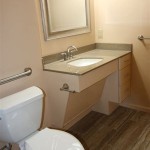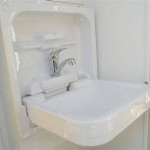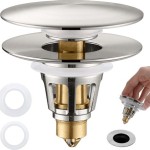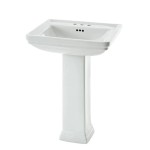How To Install Bathroom Vent Hose
Proper ventilation is crucial for any bathroom to prevent moisture buildup, which can lead to mold, mildew, and structural damage. A key component of effective bathroom ventilation is the vent hose, which carries moisture-laden air from the bathroom fan to the outdoors. This article provides a comprehensive guide to installing a bathroom vent hose, ensuring optimal performance and longevity of the ventilation system.
Planning and Preparation
Before beginning the installation process, careful planning and preparation are essential. This includes:
- Determining the shortest and most direct route from the bathroom fan to the exterior vent.
- Measuring the distance to determine the required length of vent hose.
- Choosing the appropriate type of vent hose (rigid metal, flexible aluminum, or flexible plastic) based on the installation requirements and local building codes.
- Gathering necessary tools and materials, including a measuring tape, utility knife, tin snips (for metal ducting), foil tape, clamps, and sealant.
- Turning off the power to the bathroom fan at the electrical panel.
Connecting the Vent Hose to the Bathroom Fan
Connecting the vent hose securely to the bathroom fan is crucial for preventing air leaks. Follow these steps:
- If using flexible duct, slide a clamp over the end of the hose before attaching it to the fan.
- Fit the vent hose over the fan's duct connector.
- Secure the connection with the clamp, ensuring a tight seal.
- Seal the connection further with foil tape, overlapping the edges of the tape for a complete seal.
Running the Vent Hose
Running the vent hose efficiently and correctly is important for maximizing airflow. Consider these points:
- Use the shortest and most direct route possible to minimize resistance and maximize airflow.
- Avoid sharp bends and kinks in the hose, as these can restrict airflow.
- Support the vent hose using straps or hangers, especially for longer runs.
- Insulate the vent hose if it runs through unheated spaces to prevent condensation buildup.
- When running through walls or ceilings, ensure proper fire blocking and insulation around the hose to comply with building codes.
Connecting the Vent Hose to the Exterior Vent
The connection to the exterior vent cap is the final step in ensuring proper ventilation. This involves:
- Securely attach the vent hose to the exterior vent cap using a clamp and foil tape.
- Ensure the vent cap is properly sealed to prevent water and insect intrusion.
- Verify that the vent cap flap opens freely when the fan is operating.
Using Rigid Ductwork
While flexible ducting offers ease of installation, rigid ductwork provides superior airflow. Consider the following if using rigid ducting:
- Measure and cut the rigid duct sections to the required lengths using tin snips.
- Connect the duct sections using appropriate connectors and seal all joints with foil tape.
- Support the rigid ductwork with straps or hangers.
- Rigid ductwork typically requires more planning and precision cutting but offers the best performance.
Working with Existing Ductwork
When replacing existing ductwork, take note of these considerations:
- Carefully remove the old ductwork, noting the routing and connections.
- Inspect the existing vent cap and replace it if necessary.
- Clean any debris or obstructions from the vent path before installing the new hose.
- Ensure the new ductwork is compatible with the existing fan and vent cap.
Testing and Maintenance
After installation, testing and regular maintenance are essential.
- Turn the power back on to the bathroom fan and test its operation.
- Check for any air leaks around the connections by feeling for drafts while the fan is running.
- Periodically clean the vent cap to prevent debris buildup, which can restrict airflow.
- Inspect the vent hose for any signs of damage or deterioration and replace it if necessary.
Choosing the Right Vent Hose
Selecting the appropriate vent hose is crucial for optimal performance. Consider these factors:
- Material: Flexible aluminum and plastic are easier to install, while rigid metal provides superior airflow.
- Diameter: Match the diameter of the vent hose to the fan's duct connector.
- Length: Choose the shortest possible length to minimize resistance.
- Insulation: Consider insulated ducting for installations in unheated spaces.

Venting A Bath Fan In Cold Climate Fine Homebuilding

Blog

Installing A Bathroom Fan Fine Homebuilding

How To Install A Bathroom Fan 7 Steps For An Easy Diy

How To Use An In Line Exhaust Fan Vent Two Bathrooms Diy Family Handyman

How To Replace And Install A Bathroom Exhaust Fan From Start Finish For Beginners Easy Diy

Bathroom Exhaust Fans Building America Solution Center
:strip_icc()/SCW_220_12-d6ed4be9d9fc474894d0a0e1c0a87d23.jpg?strip=all)
How To Install A Bathroom Vent Fan For Mildew Free Space

Install A New Bathroom Vent Fan Light

Bathroom Exhaust Fans Building America Solution Center







